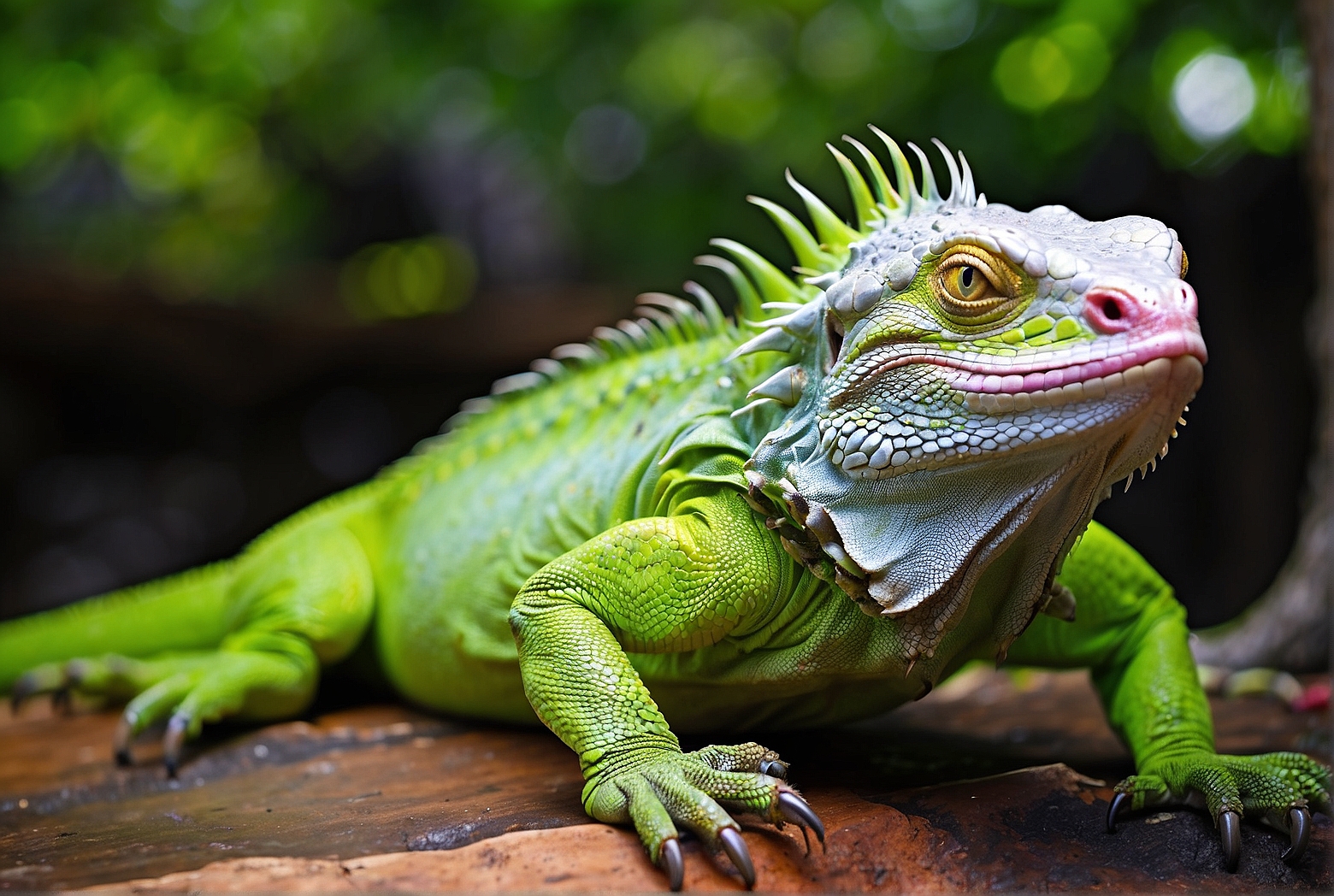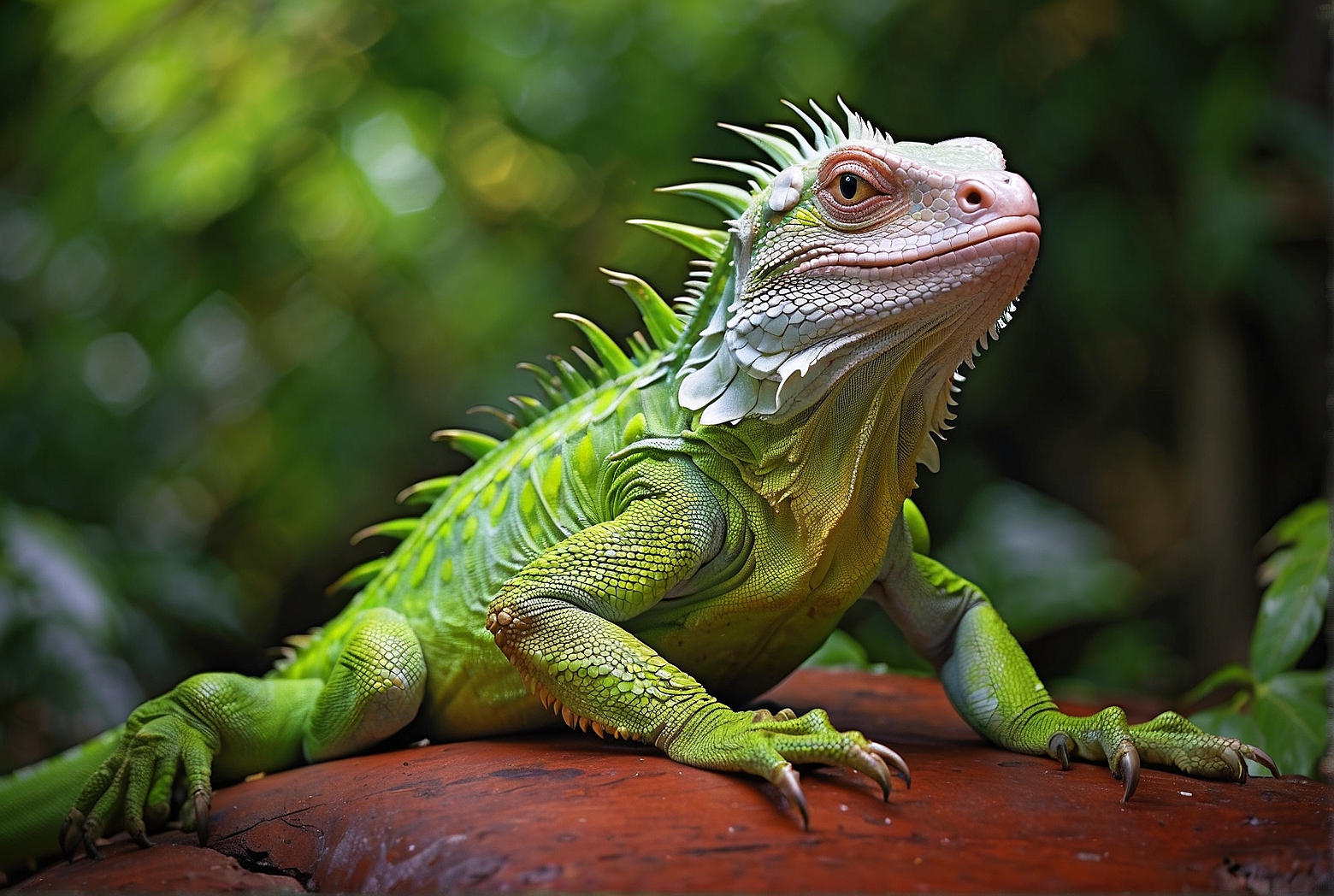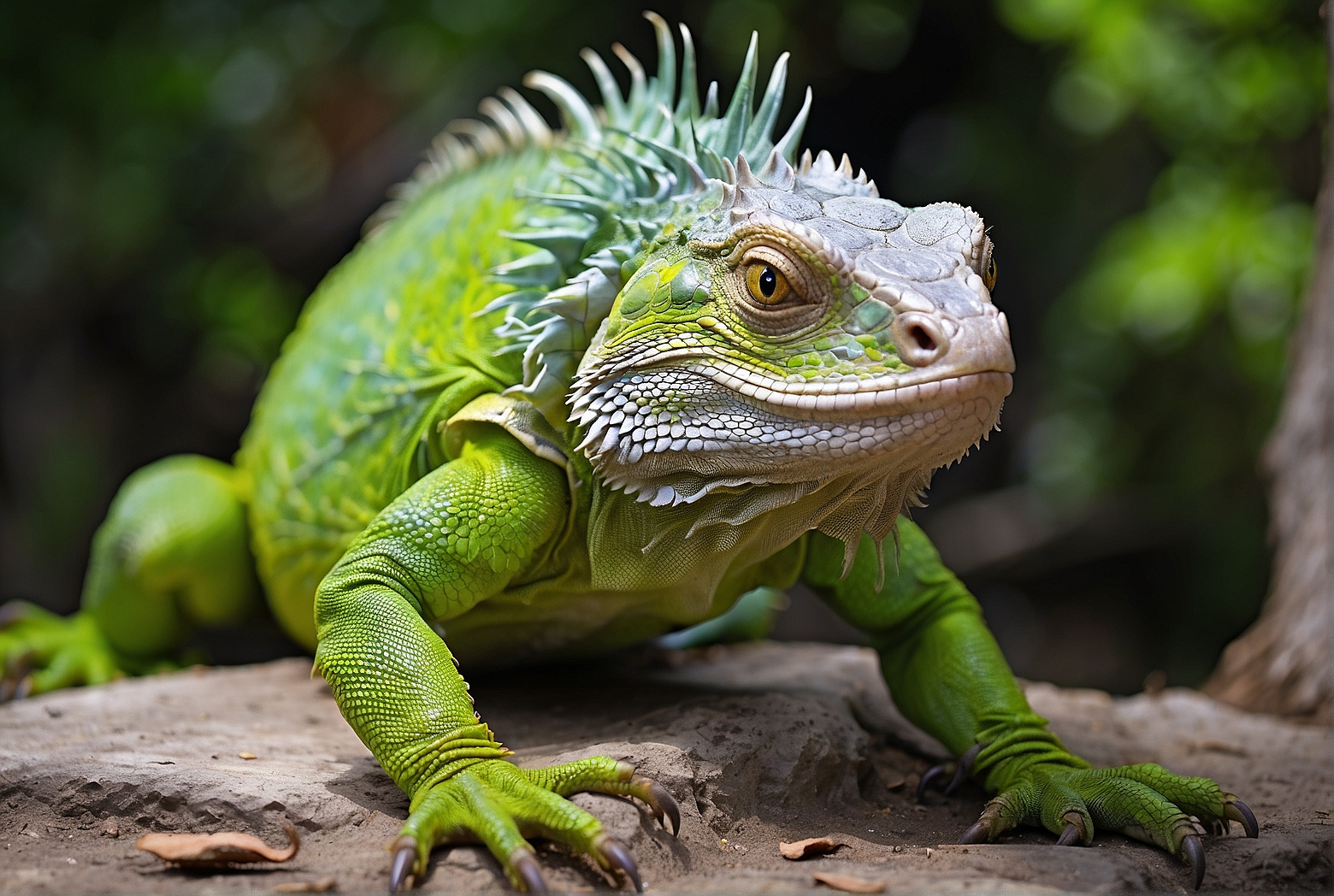Imagine stepping into a world filled with striking colors and captivating creatures, where every hue seems to come alive. In this enchanting realm, one particular creature stands out with its vibrant presence and eye-catching appearance. It’s none other than the lime green iguana. With its dazzling iridescent scales and graceful movements, this remarkable reptile captures the attention of anyone fortunate enough to witness its existence. Journey with us as we uncover the fascinating life of the lime green iguana, delving into its unique characteristics and discovering the secrets it holds within its radiant exterior. Let’s embark on a captivating adventure into the vivacious world of this extraordinary creature.
Habitat
Natural Environment
The lime green iguana, also known as the green iguana or common iguana (scientific name: Iguana iguana), is native to the tropical regions of Central and South America. These reptiles are primarily found in rainforests, swamps, and humid coastal areas. They are well adapted to the lush vegetation and high temperatures of these regions. The towering trees and dense foliage provide the perfect habitat for these arboreal creatures.
Enclosure Setup
When keeping a lime green iguana as a pet, it is important to provide a spacious and stimulating enclosure that mimics their natural environment. A large vertical enclosure with ample climbing opportunities is essential for their physical and mental well-being. It should have branches, vines, and platforms at different heights to encourage natural behaviors such as climbing, perching, and basking. A substrate made of reptile-safe materials like coconut fiber or reptile carpet can be used for the floor. It is crucial to maintain proper temperature and humidity levels in the enclosure through the use of heat lamps, UVB lights, and misting systems.
Diet
Herbivorous Diet
lime green iguanas are herbivores, meaning their diet consists solely of plant matter. Their natural diet primarily includes a variety of fruits, vegetables, leaves, and flowers. It is important to provide a diverse range of these foods to ensure a balanced nutritional intake. Leafy greens like collard greens, mustard greens, and dandelion greens should make up a large portion of their diet. Fruits such as mangoes, papayas, and strawberries can be offered as occasional treats. It is crucial to avoid feeding them foods high in oxalates, such as spinach and rhubarb, as these can interfere with calcium metabolism and lead to health problems.
Feeding Schedule
Adult lime green iguanas should be fed once a day, while juveniles may require two smaller meals. In their natural habitat, they are diurnal feeders, meaning they feed during the day. It is recommended to offer food in the morning when they are most active. Fresh food should be provided daily, and any uneaten food should be removed to prevent spoilage and attract pests. Additionally, it is vital to sprinkle a calcium supplement on the food a few times a week to ensure proper calcium uptake and prevent metabolic bone disease.
Physical Characteristics
Coloration
As the name suggests, lime green iguanas have a striking lime green coloration that helps them blend in with the lush vegetation of their natural habitats. However, it is important to note that their color can vary depending on their age, sex, and mood. The vibrant green can range from a light lime green to a darker emerald or olive green. Some individuals may also display blue or turquoise markings along their bodies.

Size and Shape
Lime green iguanas are one of the largest species of iguanas, with adult males reaching lengths of up to 6 feet (1.8 meters) and weighing around 11-20 pounds (5-9 kilograms). Females are slightly smaller, typically measuring around 4-5 feet (1.2-1.5 meters) in length and weighing 6-15 pounds (3-7 kilograms). They have a slender and elongated body shape, with muscular limbs and sharp claws that aid in climbing trees and foraging for food.
Tail
One of the most distinctive features of lime green iguanas is their long and powerful tail. Their tail is usually longer than their body and helps with balance, communication, and defense. In times of danger, they can use their tail as a whip-like weapon, capable of inflicting painful strikes. It also serves as a fat storage reservoir, allowing them to survive during periods of food scarcity.
Skin
The skin of lime green iguanas is covered in small scales that provide protection and help regulate their body temperature. These scales are usually rough to the touch and have a slightly bumpy texture. During shedding, their skin becomes dull and opaque, and they peel it off to reveal a fresh and vibrant layer beneath. Regular shedding is essential for their growth and overall health.
Behavior
Basking
Lime green iguanas are ectothermic, meaning they rely on external heat sources to regulate their body temperature. Basking, or sunning themselves, is a crucial behavior for them to thermoregulate. They spend a significant amount of time in the sun, often perched on branches or rocks, absorbing the warmth to raise their body temperature. Basking not only helps them maintain optimal body temperature, but it is also important for proper digestion and metabolism.
Territoriality
Lime green iguanas are territorial animals, especially males. They establish and defend their territories by displaying aggressive behaviors such as head bobbing, tail whipping, and body inflation. These displays are accompanied by loud vocalizations to deter potential threats and assert dominance. As pets, it is crucial to provide adequate space and resources to avoid territorial conflicts, as overcrowding can lead to stress and aggression.
Communication
Lime green iguanas communicate using a variety of visual and vocal cues. Males often perform elaborate displays to attract mates and establish dominance. Head bobbing, push-ups, and dewlap extensions are common visual displays used to communicate with conspecifics. They also produce a range of vocalizations, including hisses, clicks, and growls, to convey different messages. Understanding their communication cues is essential for proper care and handling.

Reproduction
Sexual Dimorphism
Sexual dimorphism is evident in lime green iguanas, with males and females exhibiting distinct physical characteristics. Males are larger and more robust compared to females. They have larger femoral pores on their inner thighs, which are used to release scent during courtship rituals. Mature males also develop prominent dorsal crests along their spines and possess larger, more pronounced jowls.
Mating Behavior
During the breeding season, males actively court females through elaborate displays and physical interactions. These courtship displays involve head bobbing, circling, and aggressive behaviors aimed at gaining the female’s attention. If the female is receptive, mating occurs. After the act of copulation, the female will lay her eggs in a secure location to ensure the survival of her offspring.
Egg Laying and Incubation
Female lime green iguanas are oviparous, meaning they lay eggs rather than give live birth. They dig burrows in soft soil or sand to create nests, in which they deposit their eggs. The number of eggs produced can vary, with clutches ranging from 20 to 70 eggs, depending on the female’s size and health. After laying the eggs, the female covers them with soil and leaves them to incubate naturally. The eggs usually hatch after a period of 65 to 90 days, depending on the temperature and humidity levels.
Health and Care
Signs of Good Health
A healthy lime green iguana will display several indicators of well-being. These include clear and alert eyes, vibrant and hydrated skin, a healthy appetite, and smooth shedding. They should be active, responsive, and exhibit normal behaviors such as basking, exploring their enclosure, and feeding. Regular veterinary check-ups, proper hygiene, and a suitable diet are crucial for maintaining their health.
Preventive Measures
To ensure the well-being of a lime green iguana, preventive measures should be taken. This includes providing a clean and adequately sized enclosure, maintaining appropriate temperature and humidity levels, and offering a balanced and varied diet. Regular physical and visual health checks should be performed, and any abnormalities or concerns should be addressed promptly. Additionally, it is important to minimize stress and handle them with care to prevent injuries or behavioral issues.
Common Health Issues
While lime green iguanas are generally hardy reptiles, they are prone to certain health issues that require attention. Vitamin and mineral deficiencies, such as calcium or vitamin D3 deficiency, can lead to metabolic bone disease. Respiratory infections, internal parasites, and mouth rot are other common health issues that can affect their overall well-being. Some of these problems can be prevented through proper husbandry practices and regular veterinary care.
Social Life
Solitary Animals
Lime green iguanas are predominantly solitary animals, with minimal social interactions outside the breeding season. They establish and defend their territories, and individuals typically avoid close encounters with conspecifics. While they may tolerate the presence of other iguanas in captivity, it is important to provide ample personal space to prevent stress and aggression.
Interactions with Other Iguanas
When introduced to other iguanas, lime green iguanas may display territorial behaviors. These interactions can include aggressive displays, such as head bobbing or biting, as they establish a social hierarchy. While some individuals may peacefully coexist, it is essential to closely monitor interactions and separate them if any signs of aggression or stress arise.
Conservation Status
The lime green iguana, also known as the green iguana or common iguana, is classified as “Least Concern” by the International Union for Conservation of Nature (IUCN). This means that, overall, the species is not currently facing any major threats to its survival. However, certain localized populations may be affected by habitat loss, poaching for the pet trade, and predation by introduced species. Conservation efforts, including habitat preservation and sustainable harvesting practices, are crucial to ensure their long-term survival.
Popular Pet
Requirements for Keeping as a Pet
Keeping a lime green iguana as a pet requires careful consideration and commitment. These reptiles have specific care needs and can live for over 15 years, with some individuals reaching up to 20 years or more. A spacious and well-designed enclosure, proper heating and lighting sources, and a balanced diet are essential. They also need regular veterinary check-ups and proper handling techniques to ensure their well-being. Potential owners should thoroughly research their care requirements before committing to keeping a lime green iguana as a pet.
Training and Handling Tips
While lime green iguanas can be kept as pets, it is important to remember that they are wild animals and may not readily adapt to handling. With patience and positive reinforcement, some individuals can become more tolerant of human interaction. Start by gradually introducing handling sessions, keeping them short and stress-free. Focus on creating positive associations by offering treats and rewards. It is crucial to respect their boundaries and never force handling, as this can lead to stress and aggressive behaviors.
Fascinating Facts
Long Lifespan
Lime green iguanas are known for their impressive lifespan, with some individuals living well into their 20s. With proper care and a suitable environment, they can thrive and provide companionship for many years. Their long lifespan makes them a significant commitment as pets and highlights the importance of providing them with appropriate care throughout their lives.
Regenerating Tails
One of the fascinating abilities of lime green iguanas is their capacity to regenerate lost tails. If their tail is injured or detached, a process called autotomy, they can regrow a new one. The regrown tail might not look identical to the original, but it will be functional and serve the same purposes. This remarkable adaptation allows them to escape predators and survive in their natural habitat.
In conclusion, the lime green iguana is a fascinating reptile with unique physical characteristics, behaviors, and care requirements. From its vibrant green coloration to its long lifespan and regenerating tail, this species captivates the imagination. Whether admired in their natural habitat or kept as pets, these reptiles require proper care and attention to thrive. Understanding their natural environment, diet, behavior, and health needs is essential for providing them with a vibrant and fulfilling life.
